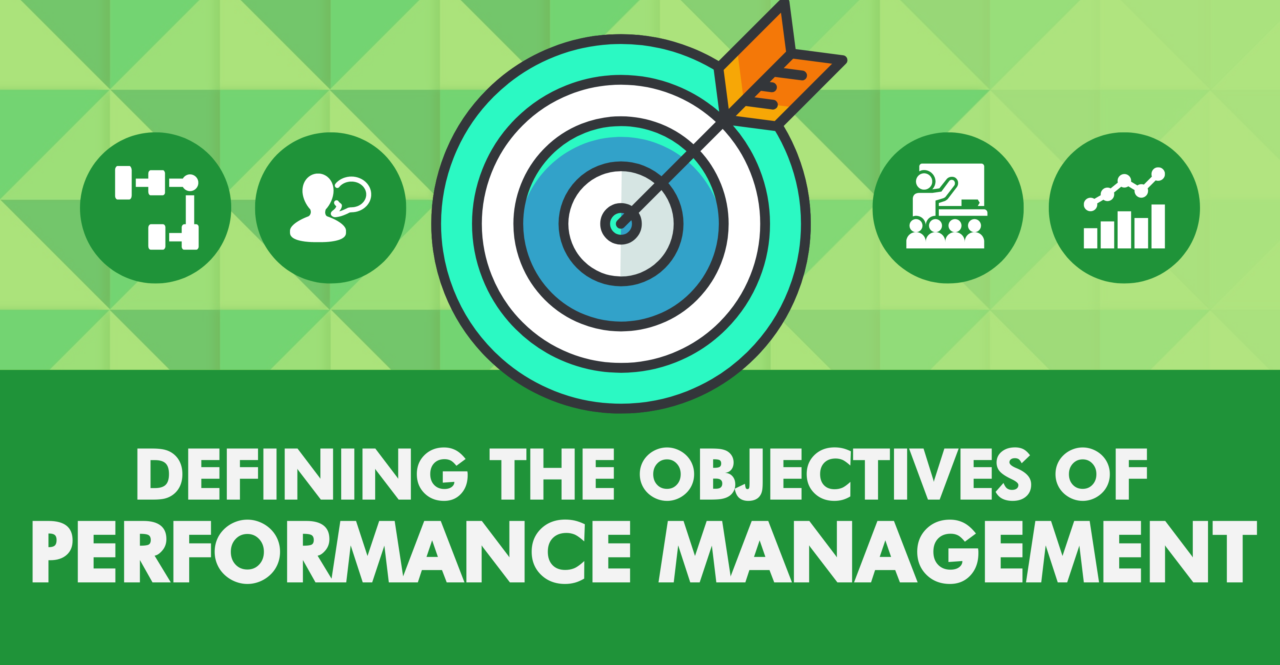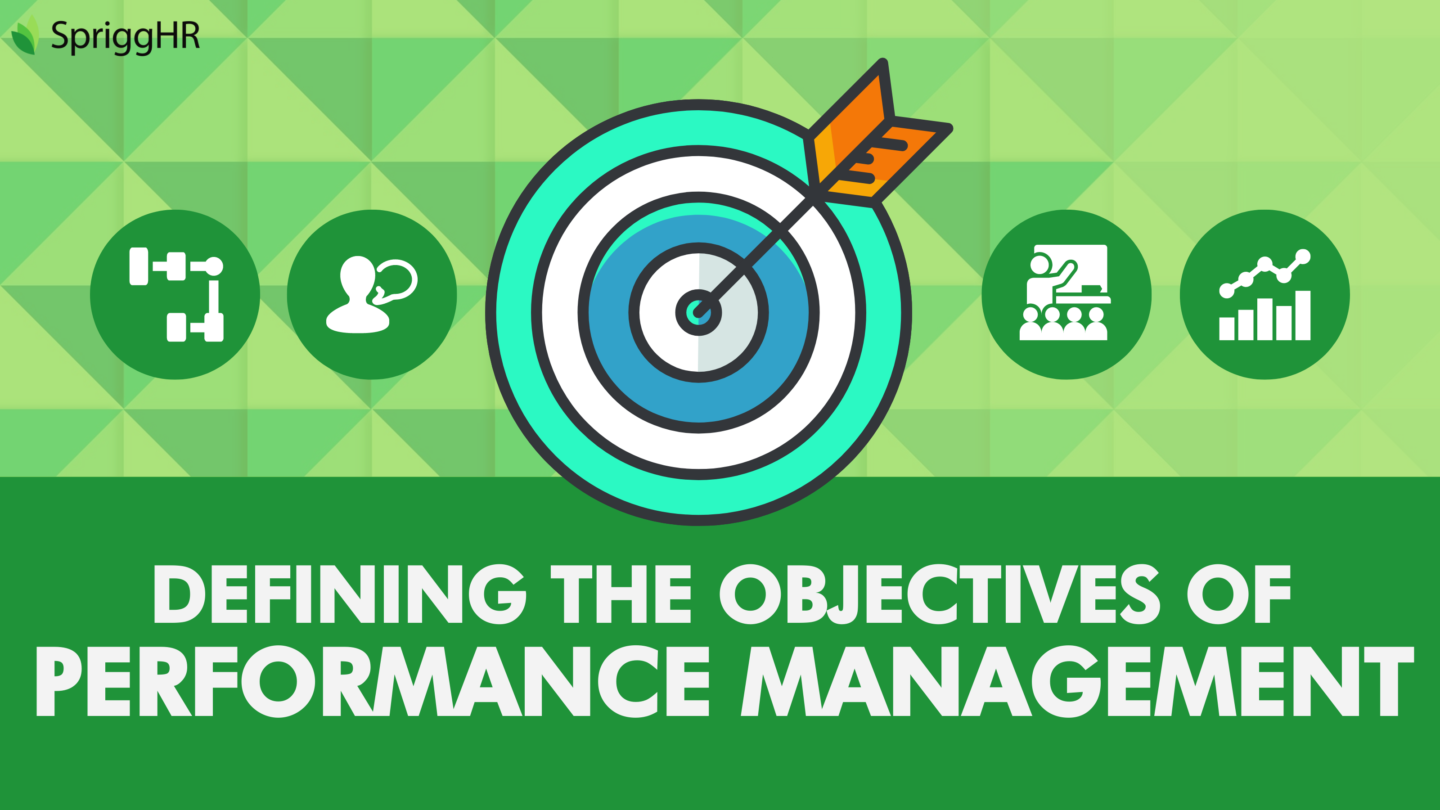
Defining the Objectives of Performance Management
Performance management is defined as “an ongoing process that seeks to continuously identify, measure, and develop the performance of a workforce.” But, in order to successfully establish a system that works, you first need to understand the objectives of performance management.
Objectives of Performance Management Systems
Chances are that your organization already has a performance management system in place. But for many companies, the performance management approach itself has many gaps in both measuring and managing performance. This is typically due to a fundamental misunderstanding of the intent of performance management as a system.
Here are the major objectives of performance management that you should consider when establishing, or reformatting, your performance management system:
1. Setting and Defining Goals
Goal setting has always been one of the most effective and consistent methods used to improve performance among employees. Setting and defining clear goals yields several key benefits, including:
- Allowing employees to focus on what’s important.
- Aligning individual objectives with business objectives.
- Optimizing employees’ individual performance.
- Identifying the key result areas and work upon improving them.
Efficient performance management techniques and systems will always place goal setting as one of its most critical requirements. As a manager, it is your responsibility to set goals that are mutually beneficial for both employee performance and business performance.
2. Setting Expectations for Managers and Employees
Alongside distinct goals, a strong performance management system seeks to establish clear expectations from managers and employees alike.
As a manager, setting manageable expectations for your employee is critical – don’t expect a poor performer to start yielding great results from the get-go, or an excelling performer to stay consistently at the top every week. Similarly, holding managers to unmanageable standards runs the risk of bringing in poor management decisions.
In order to set expectations that yield solid results, try to follow this succession of stages for expectation setting:
- Define the expectations in clear terms. Let your employees know exactly what is expected from them and provide clarification when needed.
- Explain how the expectations established will help in fulfilling the overall business objectives; draw the line of sight between their contribution and the business achieving those objectives.
- Document the expectations. Establish a process that clearly defines and measures what to do and who is responsible for each task.
Only when employees (and managers) have a clear understanding of their own roles, responsibilities, and accountabilities, that they are likely to be more consistent in their results and productive in their work efforts.
3. Establishing Effective Communication
Especially today, when so many workplace dynamics are shifting to meet new demands or to respond to external circumstances, communication is essential. When an organization has a culture dedicated to strong, effective communication, it results in a workforce that is engaged and has aligned its individual objectives with the overall business objectives.
Part of effective communication involves transparency – team members should have a clear understanding of what other active projects their teammates are engaged in. A team that lacks communication, ultimately lacks the synergy that is required for any high performing team.
In order to build a communication active environment, consider the following tips:
- Team leaders, or managers, should take sufficient time to indulge in one-on-one interactions with their team members; regular touch-points and contact.
- To build a workforce with varied skills, that fosters further career development, continuous feedback and coaching are critical. This can be done through performance reviews, or 360-Feedback resources.
- Set and conduct regular team building activities (there are some great online activities).
- Promote and encourage collaboration and communication among team members, and as an essential part of the workplace culture.
- Use appropriate and helpful business communication tools.
4. Setting Performance Standards
Arguably one of the most critical objectives of performance management, setting performance standards for employees can make or break the results of your performance management system. Any good performance management system should always have a set of performance standards, and performance plans, that streamline employee performance evaluation and improvement.
Every role in a company has a certain performance standard that comes along with it, and a failure to accomplish performance standards can mean the following for your business:
- A lack of effort on the employees’ part.
- Setting even more unrealistic standards for the job that is failing to reach its existing standards.
- Not having enough resources to complete the new demands.
- A failure of cooperation or collaboration from the team and manager.
It is impossible to identify reasons for failures in an individual’s performance without a performance management system. Performance management systems highlight gaps in contribution, while bringing attention to the areas that note progress.
One of the greatest objectives of performance management is to identify the strengths and opportunity areas of your organization, which become more evident and therefore easier to identify and improve upon with the established performance standards to measure against.
5. Establishing Individual Training and Performance Plans
The final and essential objective of performance management deals with individual development – that is, to identify the training and development needs of employees, and implement a well-designed development plan.
Establishing personal development plans helps employees acquire the necessary knowledge and skills to advance in their individual careers. A well-executed performance plan builds improved competency and value add to one’s position, and ultimately organizational value.
To create an effective employee performance plan, that fosters individual career development, follow these steps:
- Identify the position-specific skills, training, or courses required to optimize success.
- Establish a training plan and budget.
- Determine how the new training skills can be applied in key result areas and prioritize based on their necessity.
Objectives of Performance Management – Summary
A well-designed performance management system can drive strong business results. However, the only way to achieve success in your system, is to have a thorough understanding of the key objectives of performance management itself.
The overall objectives of performance management are:
- To align and build individual objectives along with the organizational objectives of the company.
- To enhance the skills and personal development of employees, largely with the help of managers and leaders.
- To encourage work and working systems that help all employees in fulfilling their business goals.






